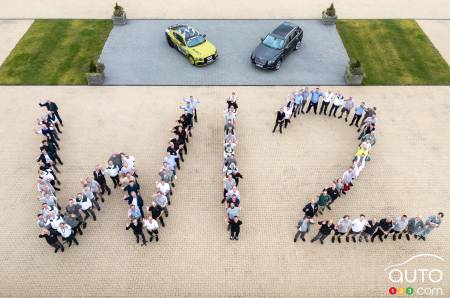Bentley turned a page in its history this week, as the company assembled its last 6.0L W12 engine at its Crewe plant in the UK. The engine had been in production for two decades, since making its debut in the Continental GT.
This last engine is significant for another reason: With its output of 740 hp, it's the most powerful engine ever offered by the brand. The engine is earmarked for one of Bentley's Batur limited editions, a one-off, limited-run car with two aims: to celebrate the W12 engine, but also to prefigure design elements for Bentley's first electric vehicle, due in 2026.

In all, Bentley produced 100,000 units of the W12 engine. And why are we talking about a W12 (rather than a V12)? It's actually due to the configuration, which is W-shaped, and essentially consists of two V6s, arranged side by side and resting on the same crankshaft. This type of engine is the same length as a V6, but 25-percent shorter than a V12. This configuration makes it easier to fit under the hood of a vehicle.
The news of the engine's demise comes as no surprise, Bentley having confirmed late last year it would retire it. For the time being, the company will continue to use its V6 and V8 engines, pending the switch to all-electric power. The block destined to replace the W12 is a V8 plug-in hybrid. Rated at 771 hp, it made its debut in June under the hood of a Continental GT Speed.
Motor Authority points out an interesting fact about the W12 engine, namely that its durability is legendary, thanks to the tests carried out on it. For one, when the engine is manufactured, the company runs it at full throttle for 100 hours, and repeats the exercise three times. This simulates driving over 35,000 km at an average speed of over 300 km/h. For another, the engine speed is brought to its red line 100 times within 30 seconds of startup, at a temperature of -10 Celsius.
Impressive. You can be sure that the latest models to benefit from this will quickly become collector's items.






